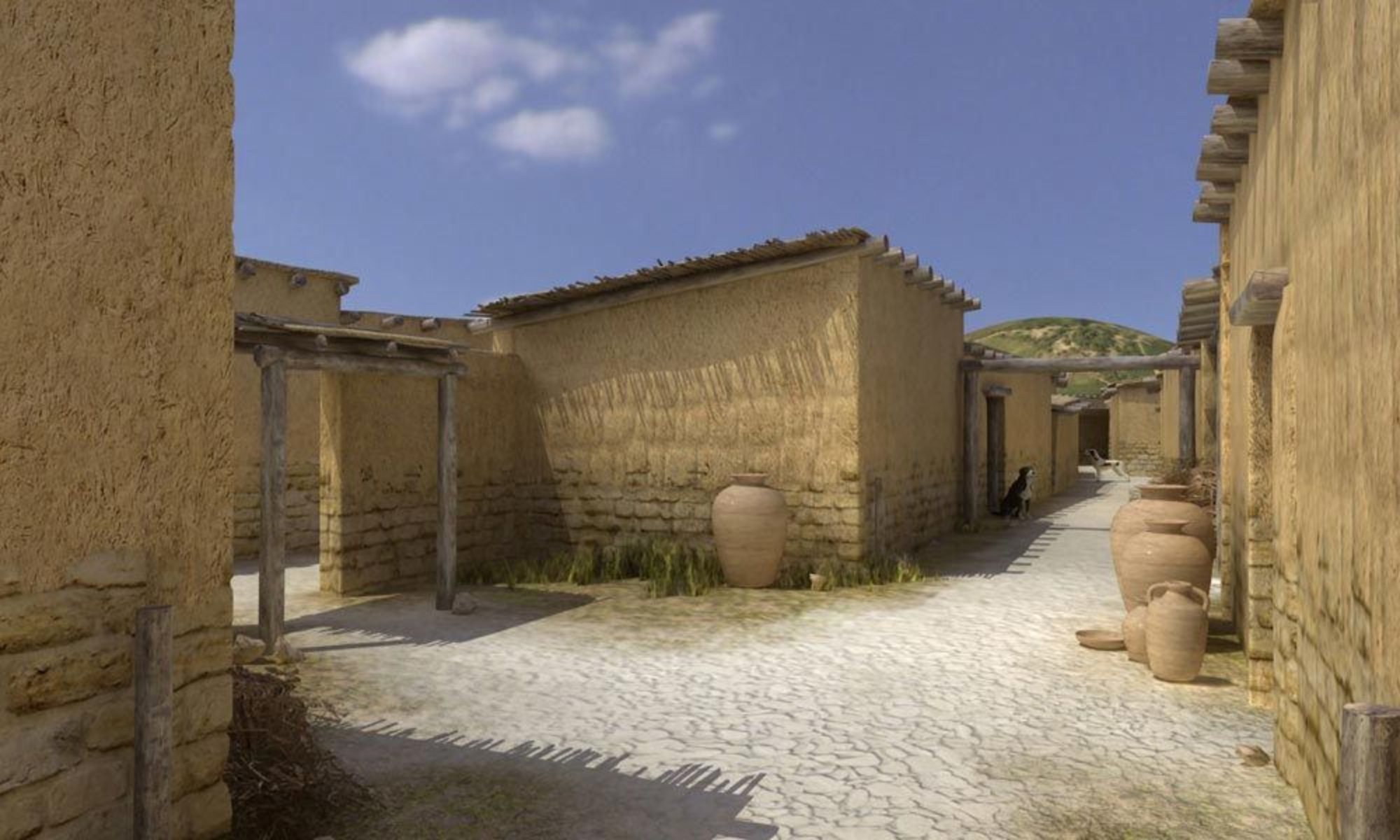
- Home
- The Gallic town
- Ritual spaces
In the absence of clear texts prior to the Roman era, defining the place that religion held in the Protohistoric period in the south of France is a delicate matter. In terms of the town's oldest occupation phase, the discovery of the statue of a warrior is very helpful in addressing this question. This armed figure was doubtless part of a group depicting a combat scene, which may have been placed in a temple – we know the importance hero cults enjoyed in archaic Mediterranean societies. For the Late Iron Age, we have no evidence pointing to the presence of specific ritual sites. We have evidence only for domestic magico-religious practices, some of which took place around the hearth while others are indicated by various ritual deposits buried beneath the floors of houses. Tangible indications of public religious practices appear only in the 1st century BCE. These include a votive shrine located in a public square, in the center of which stood a sculpted pedestal flanked by two posts.The rectangular ditch surrounding this pedestal was found to contain a number of coins, which were probably thrown there as offerings. Fragments of columns and carved lintels from the first half of the 1st century BCE discovered in various parts of the settlement may have been taken from temples. At any rate, they are evidence of a phase in which, in a time of Romanization, religion in Lattara took on a new monumental appearance. These two types of ritual sites appear as well in the Imperial Roman period. Henri Prades excavated a votive shrine probably dedicated to Priapus. Located, as is often the case, at the crossroads of three streets and surrounded by dressed stones, the shrine contained the base of a statue, around which three representations of phalluses – generally associated with the cult of Priapus – were found.A structure dedicated to Mercury, the god of trade, was also discovered. The cult of this god seems to have been popular at Lattes, as several discoveries in the Roman-era cemetery seem to indicate.
The statue of a warrior
Likely evidence of an archaic temple
In 2002, a statue sculpted in the round was found during excavations at Lattara. It had been re-used as a doorjamb in a wall from the mid-3rd century BCE. It depicted a warrior dressed in a short skirt and wearing a rich array of military equipment. This included a cardiophylax held in place by straps, shoulder protectors that pass beneath the arms and cross in the back, a crested helmet, a wide belt fastened by a buckle with three hooks, and greaves. The typological characteristics of these objects allow us to the date the statue's creation to around 500 BCE, making it one of the oldest sculptures in the round discovered in France.
The warrior's posture is unusual: in contrast with other pre-Roman representations of warriors in southern Gaul, most of whom are depicted sitting cross-legged, the Lattes figure kneels on his right leg, his torso rotated slightly to the right.Although the warrior's equipment is quite similar to that seen on statues and found in graves in the Iberian and Ibero-Languedocian world, comparisons may also be made with the Italic and, particularly, the Etruscan sphere. This allows us to extend the stylistic context to the whole of the northwest Mediterranean. This warrior was clearly part of a sculptural group that was perhaps located in a temple. Its creation was contemporary with the Etruscan occupation, and it was probably destroyed and stripped of its religious significance when the port city passed under Massalian control.








